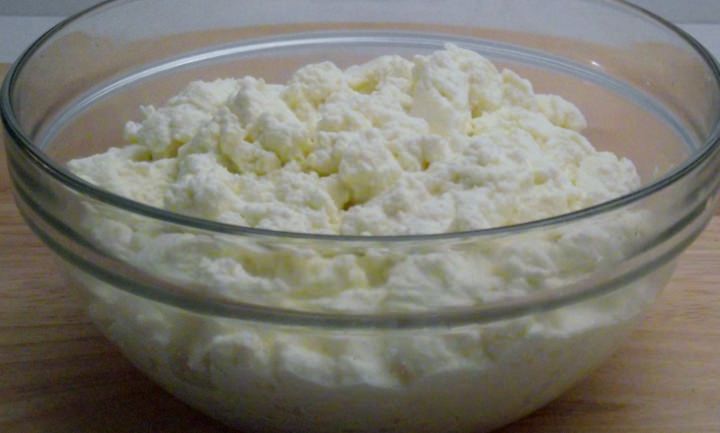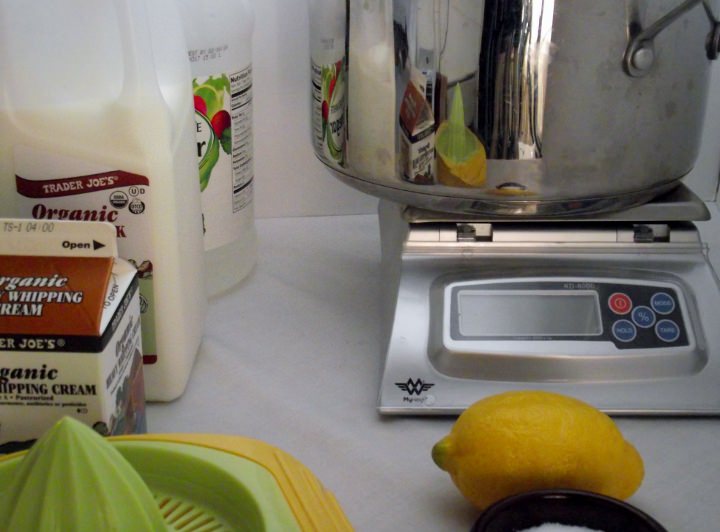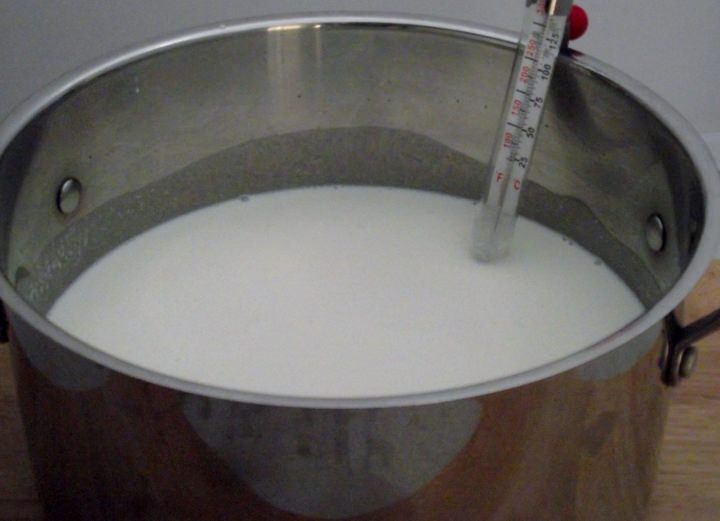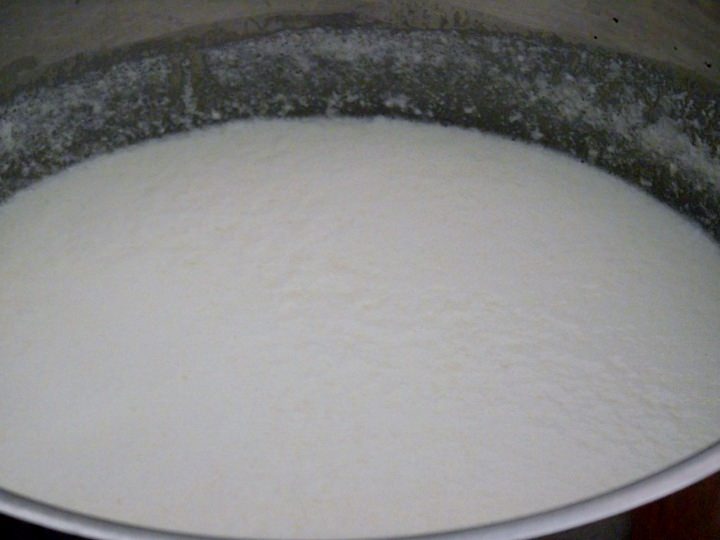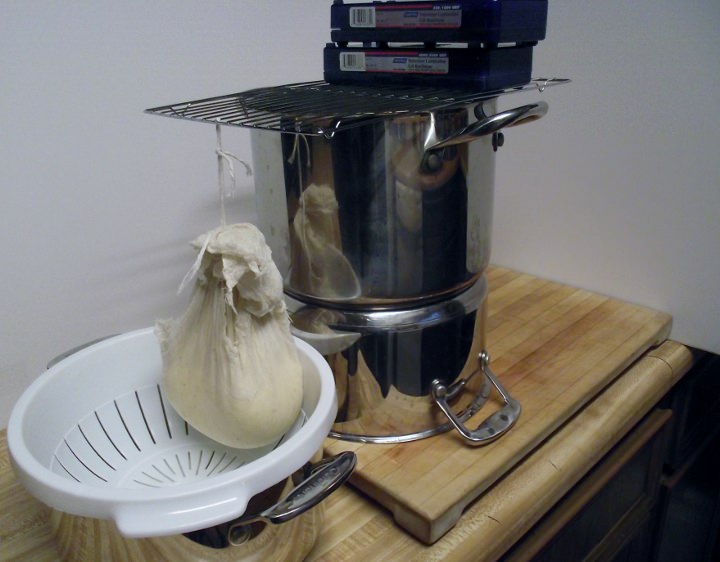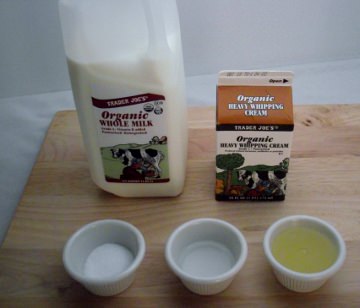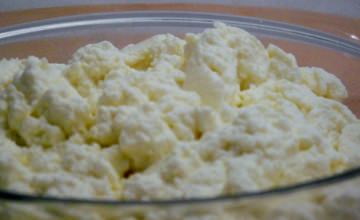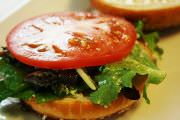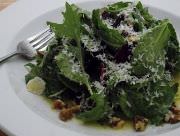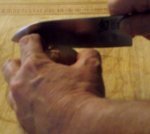Creamy Italian Ricotta
True Italian ricotta is made with the left over whey after making sheep's milk cheese and water buffalo whey after making mozzarella di bufala. Most homemade ricotta recipes incorporate some kind of acid to force the milk and cream to curdle. In these ways homemade ricotta is not like traditional ricotta. Technically, ricotta is not a cheese at all, because neither starter or rennet is used in the making.
This recipe incorporates heavy cream to give it a creamier texture. But it is so good and so creamy you'll want to make it all the time.
Typical uses for fresh cheeses like ricotta are tossing pasta with cheese to create a sauce, adding the cheese to batters like pancakes, or sweetening the cheese and incorporating it into a dessert like cannoli.
Gather your mise en place - milk, cream, salt, lemon, vinegar, juicer, scale, pot and thermometer.
Add the milk, cream and salt and bring to 200° F / 93.3° C.
Add the lemon juice and vinegar. You can see the curds forming.
This is my improvised ricotta draining station.
Don't laugh, I'm really proud of this. I cleverly stacked a cooling rack on top of two pots and counterweighted it with sharpening stones.
Italian Ricotta
- Yield: About 1 pound / 450 grams
- Prep Time: 10 minutes
- Cook Time: 30 minutes
Equipment
- 8 Quart Stock Pot
- Deep-fry Thermometer
- Heat Proof Rubber Spatula
- Digital Scale
- Hand Juicer
Ricotta mise en place measured and ready to go.
Ingredients
- 1417 grams (6 cups) whole milk - from grass fed cows
- 457 grams (2 cups) heavy cream - from grass fed cows
- 10 grams (2 tsp) kosher salt
- 42 grams (3 tbsp) lemon juice - strain through a fine mesh strainer
- 14 grams (1tbsp) white vinegar
Method
- Set an 8 quart stock pot over medium-low heat. Add the milk, cream and salt and bring to 200° F. / 93.3° C., using a thermometer. Remember to scrape and stir occasionally with a rubber spatula to prevent scalding the bottom.
- Add the lemon juice and vinegar. Stir well to thoroughly combine. Bring it back up to 200° F. / 93.3° C. Remove from heat and set aside.
- Let rest undisturbed for about 15 to 30 minutes.
- Line a colander with cheesecloth. Place the colander over a big pot so you can save the whey and carefully pour the contents into the colander.
- Tie the ends of the cheesecloth together and hang the ricotta to drain for an hour or so, the longer it hangs the drier the cheese gets. Start checking the ricotta after 20 to 30 minutes.
- When it has drained, place the ricotta in a bowl, break up, and stir. This Ricotta will keep for about a week in the fridge.
Notes
The most obvious use for Italian ricotta is to toss it with handmade pasta, particularly fresh fettuccine.
Make fresh fettuccine, or cook off a really good quality dried pasta like large shells or penne. When the pasta is done drain it and let it steam off while you brown a little butter in the pot. Add the pasta back in and add a generous amount of the ricotta. Stir to combine and season to taste with fresh cracked pepper and some fresh chopped parsley.
For a quick appetizer, top some toast points with a quenelle of ricotta, a drizzle of Extra Virgin Olive Oil, and a sprinkling of fresh chopped chives or sweet basil.
